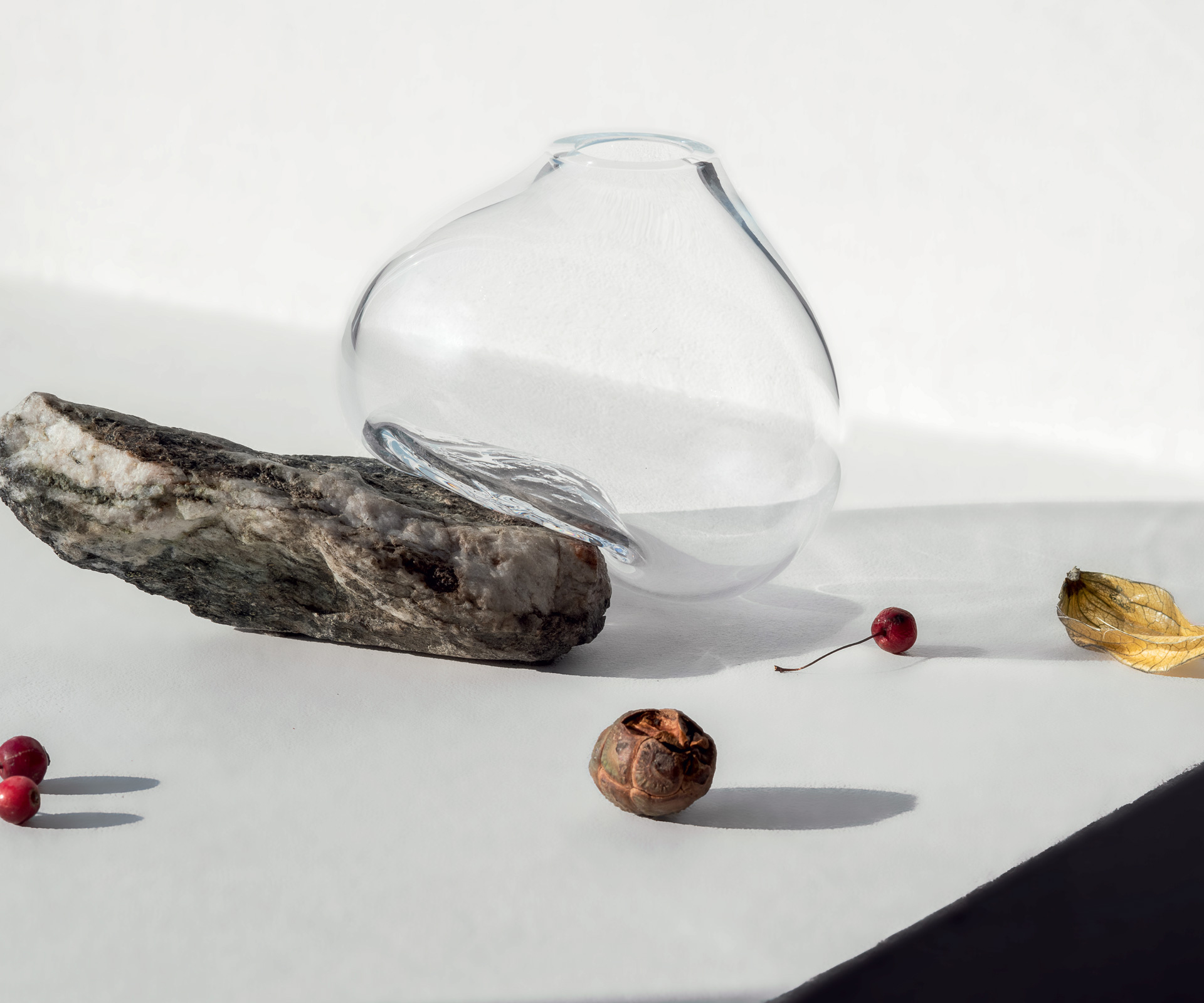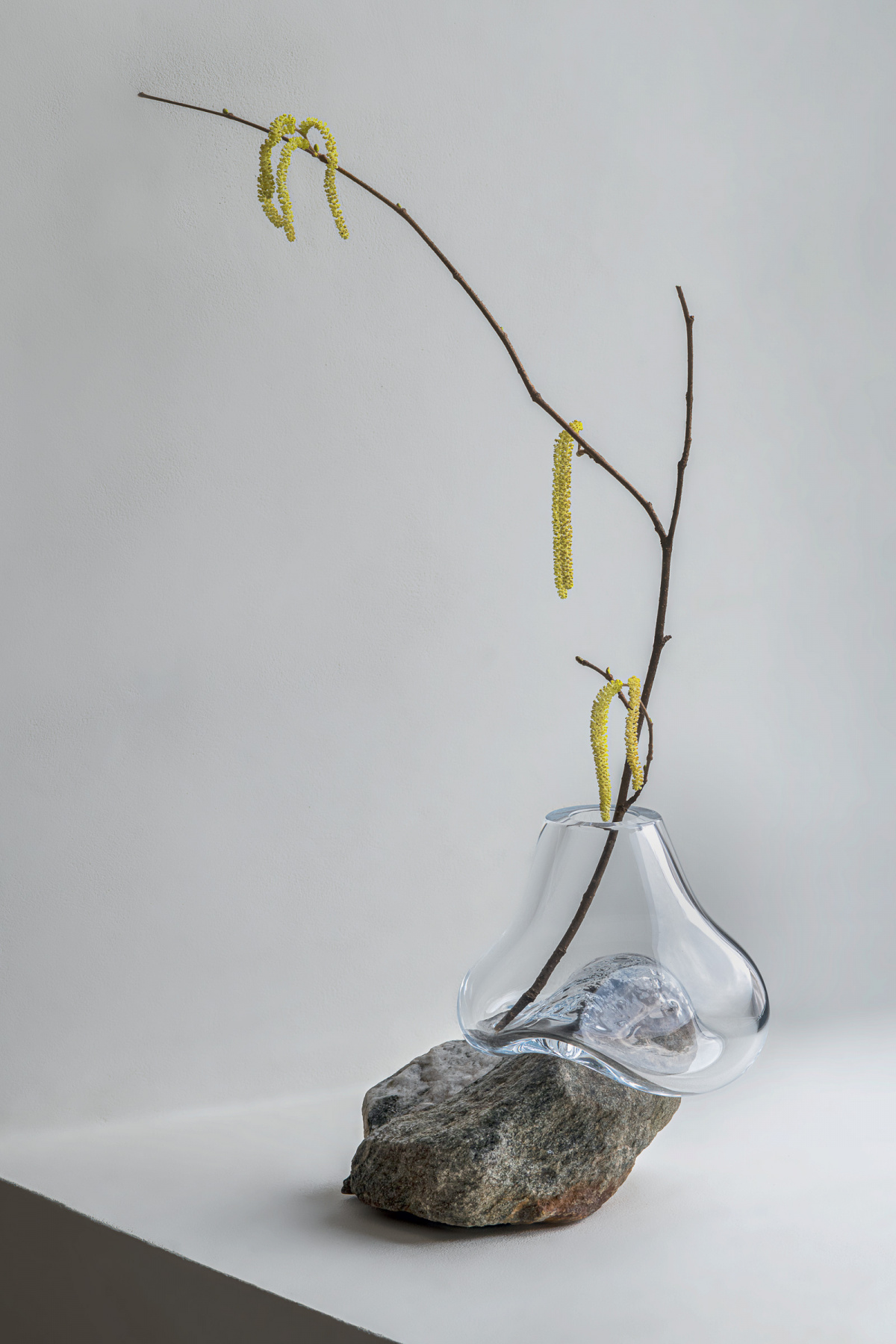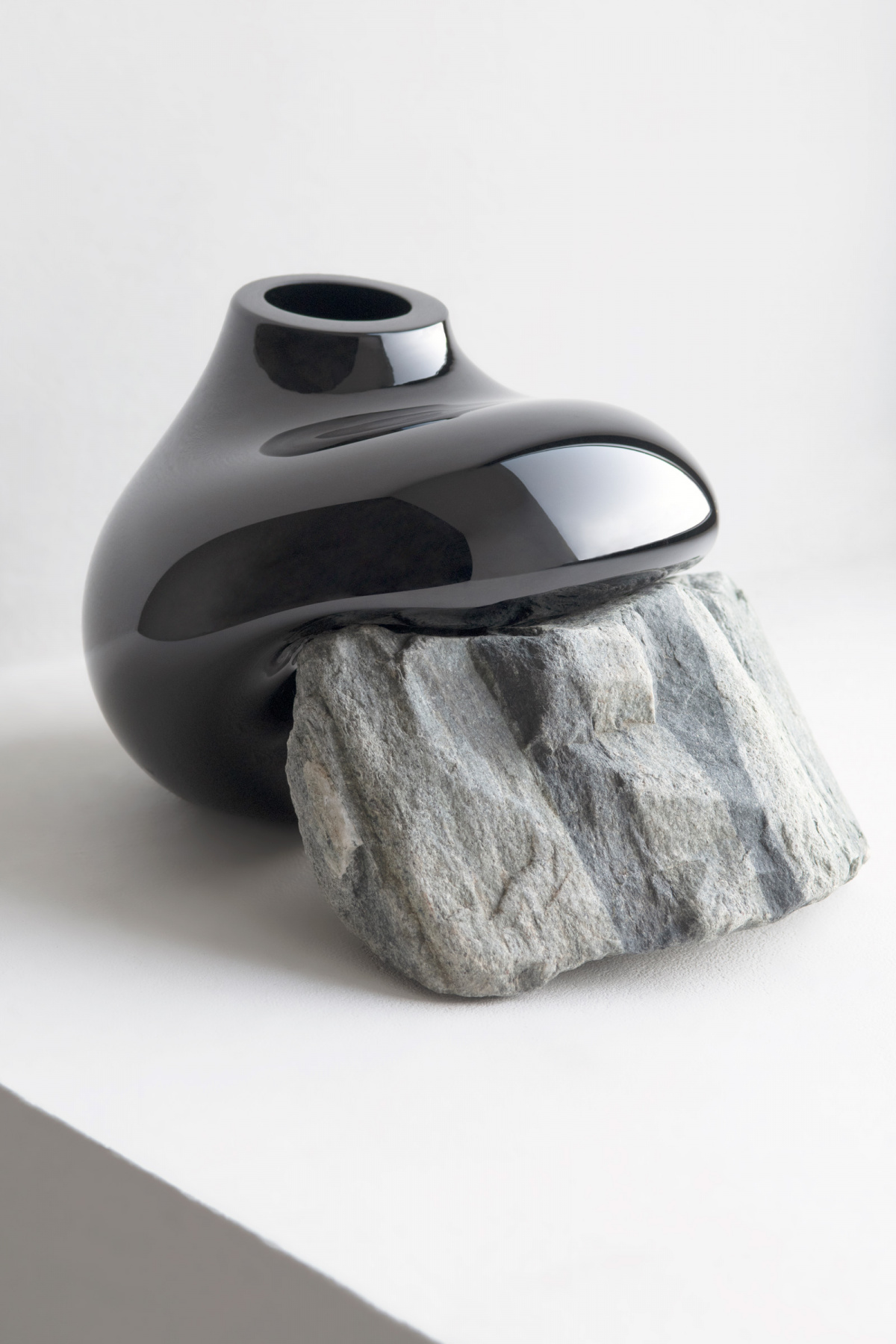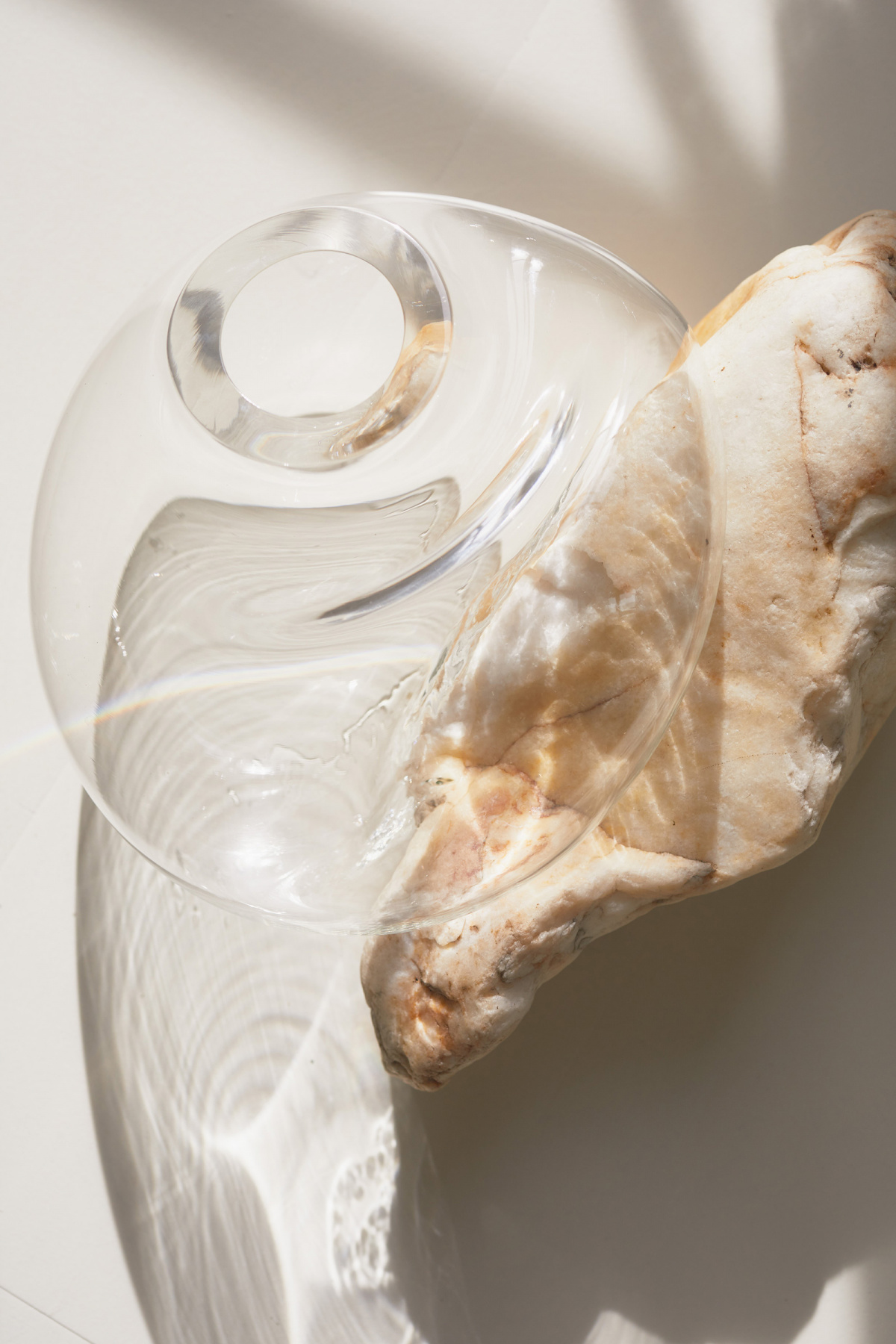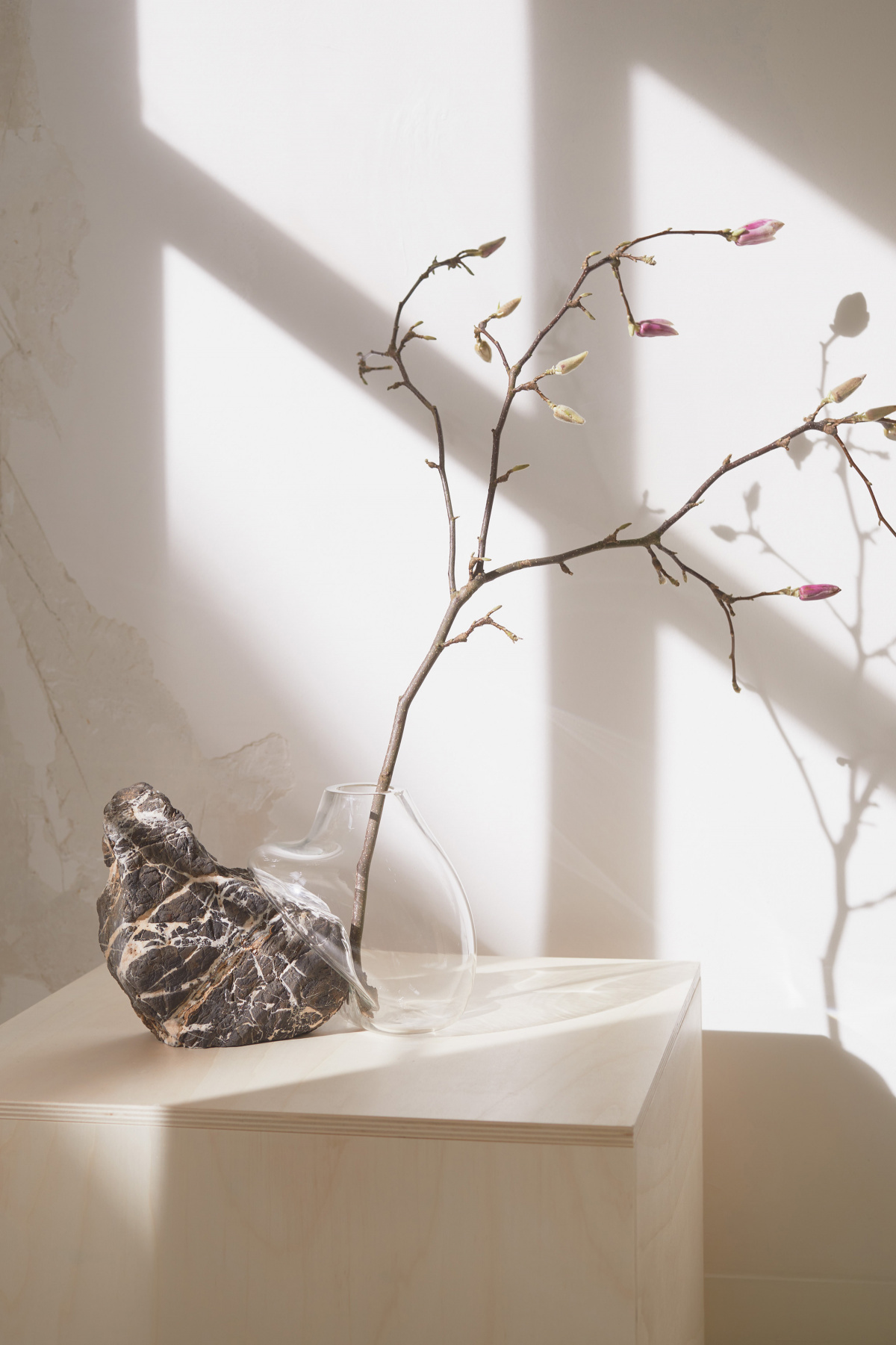“When the glass is still hot, I see my vase breathing,” Lætitia Jacquetton says. “Like it’s alive.” To her each sculpture has a different story and every person a new interpretation. As she takes stones from the wild into the hot shops of Murano, Venice, Italy, she has an idea of how the glass she blows around them will form. But often the glass, the rock, and the air she breathes into it change. “It’s taking all my energy, the energy of the glass, the energy of the rocks, and the story is happening very quickly,” Lætitia says of working in the furnace. “I have to accept that the glass wants something I was not expecting and adapt to what is coming to me.”
Inspired by suiseki, the Japanese art of contemplating rocks, Lætitia searches nature for stones with emotion, stones that resemble animals or mountains or otherwise speak to her. She quite literally is searching for her next muse in the Switzerland mountains before I call. She cuts, refines, and works the rock as little as possible to maintain its natural voice but also allow it to stand on its own before heading to the furnace. Here the rock struggles. “It’s a tough process because the glass is very hot and the rock is always shocked,” Lætitia says. Often she must blow two or three times, because the rocks crack, burn, or crumble.
Her current project involves color. As she blows the glass the heat creates illusions: What is black appears red, for example. The glass continues to morph and cool for hours, so she won’t really know what the piece looks like until the next day.
Some of these softly colorful pieces are headed to Kanazawa, Japan for an exhibition starting April 28, while others will stay in Venice for the Biennale at the end of April. An extra hurdle in their creation has been the war in Ukraine, which Lætitia says has closed about half of Murano’s hot shops. Still she expects to complete the works, as she embarks tomorrow on a hunt for the next big rock to bring to the furnace.
Working with larger rocks means more trips to the mountains, as she can only carry one at a time. But it also means the ones she finds are especially impressive. “The rock shows you that you are just a human being, a small little something in nature,” Lætitia says. “It won’t do everything you expect, and I like this process.”
- “Dent Blanche, Amphibolite and Murano Crystal,” 2021. Photo by Alizée Quinche, courtesy of MÁTI Galerie
- Photo by Alizée Quinche, courtesy of MÁTI Galerie
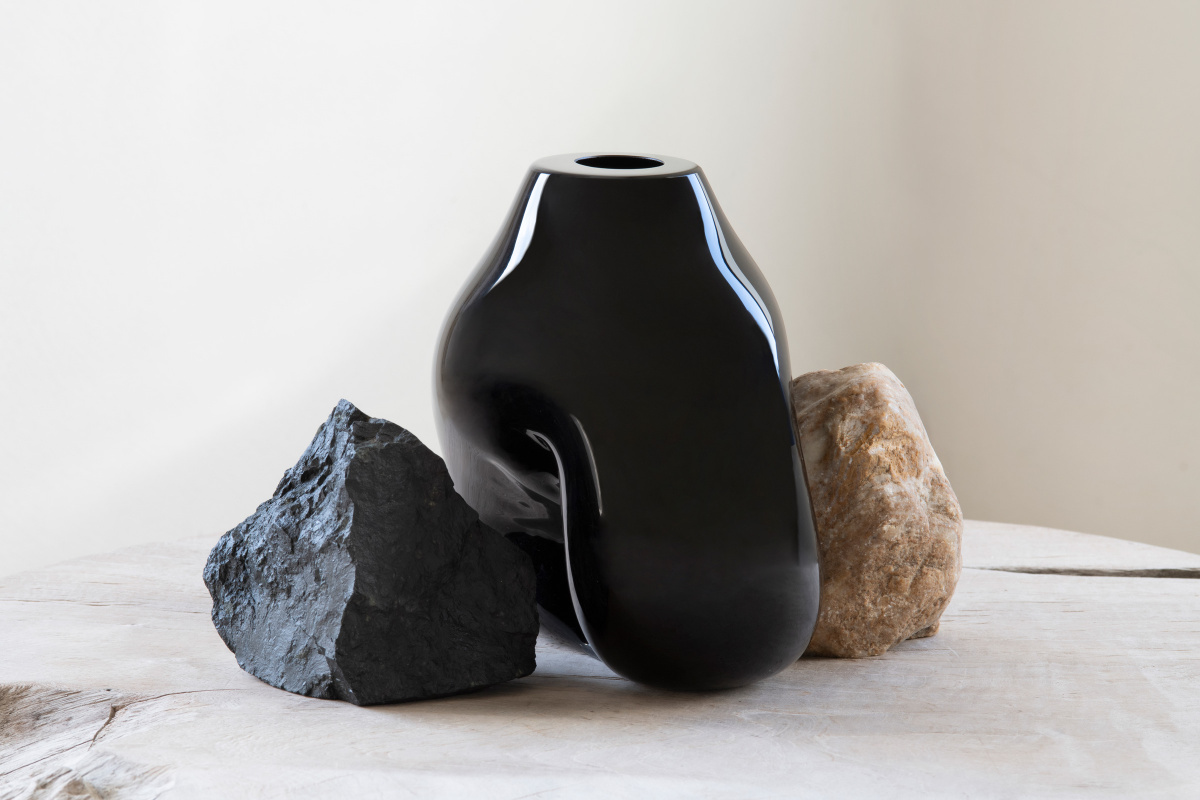
Photo by Alizée Quinche, courtesy of MÁTI Galerie
- Photo by Alizée Quinche, courtesy of MÁTI Galerie
- Photo by Linus Ricard
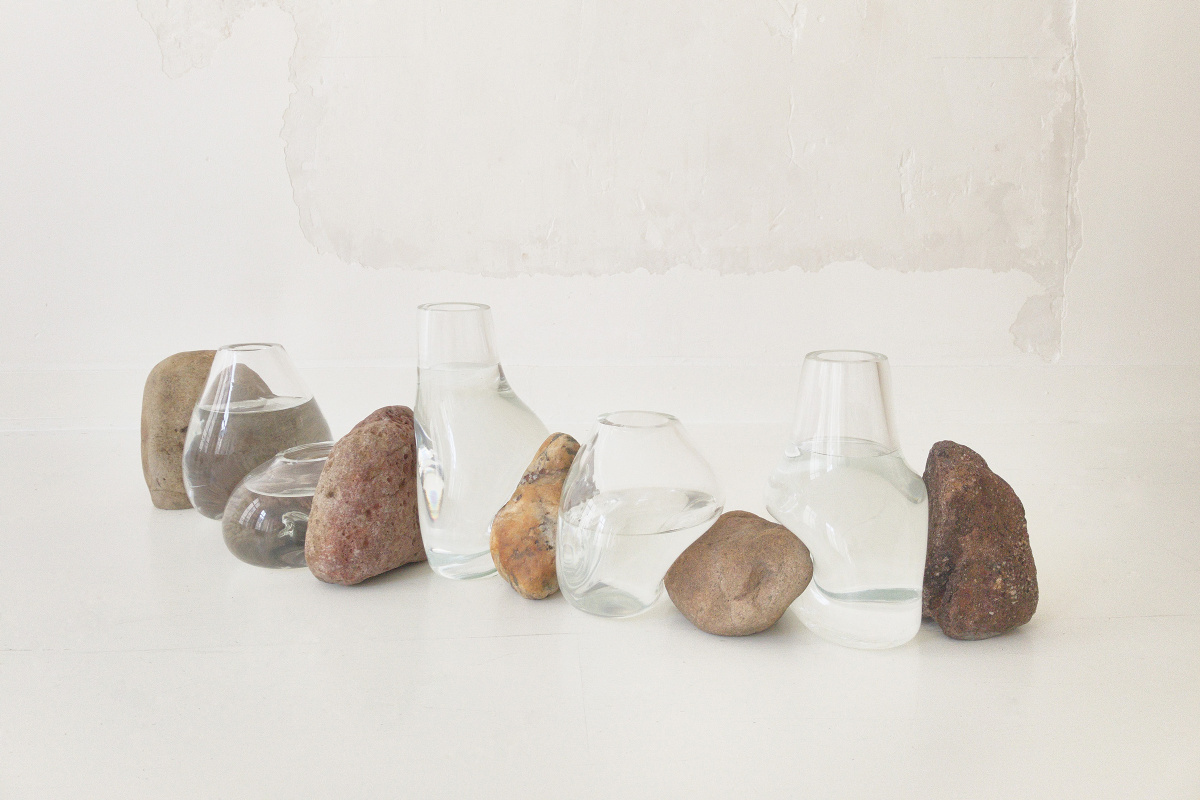
Photo by Linus Ricard
A version of this article originally appeared in Sixtysix Issue 08 with the headline “Lætitia Jacquetton.” Subscribe today.
